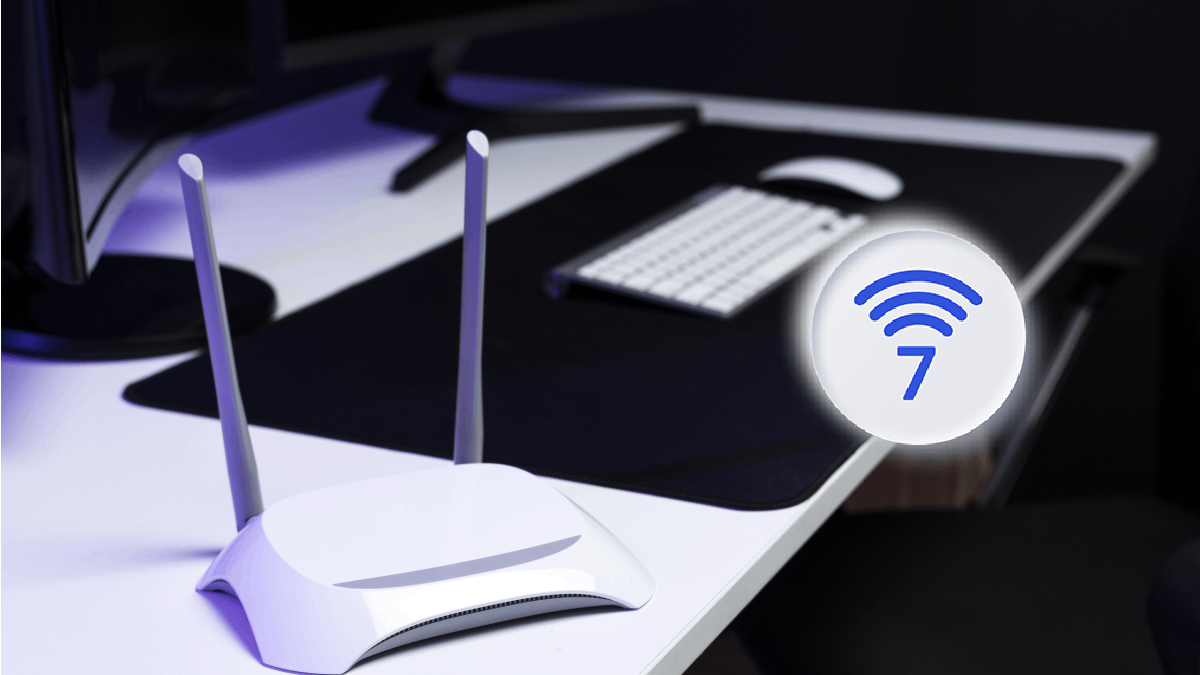the main benefits of the new standard
From this year we will see the first devices with a WiFi 7 modem. But will we really benefit from this new standard? We explain the main improvements in this article.
Contents
Wifi 7 standard
We are currently seeing more and more devices with WiFi 6 and 6E technology appear on the market, and yet a new standard is already lurking around the corner. At the end of last year, Qualcomm presented the Snapdragon 8 Gen 2 chipset and it comes with a Wi-Fi 7 modem for the first time. This means that we can expect the first devices to work with the new standard from the beginning of next year.
The new technology that comes with Wi-Fi 7 represents much more than any other number. The previous standards, WiFi 6, were all about a better connection and that on more different devices at the same time. With Wi-Fi 7, also known as ‘here, 802.11be’, the focus is once again on speed. Wi-Fi 7 modems achieve a theoretical internet speed of 40 Gbps, which is more than four times faster than the maximum 9.6 Gbps that Wi-Fi 6 and 6E achieve. Let that sink in for a moment.
That’s why Wi-Fi 7 is faster
Of course, these figures are not shrugged off by the Wi-Fi Alliance, the organization that develops the standard. There are a lot of technical improvements that contribute to that.
First of all, Wi-Fi 7 builds on the so-called ‘MU-MIMO’ technology that was introduced two years ago with Wi-Fi 6. MU-MIMO stands for ‘Multiple Input, Multiple Output’. Thanks to the use of several antennas, a router can distribute its bandwidth much better among several internet users.
Image: Qualcomm
WiFi 7 doubles the number of MU-MIMO streams from 8 with WiFi 6(E) to 16. That has a major impact on the network speed. But there is a second important factor: a new technology called ‘Multi-Link Operation’ (MLO). With WiFi 6(E), each device connects to one of three network bands: 2.4 GHz, 5 GHz or 6 GHz. You can think of each band as a kind of lane on a motorway and it ensures a smoother connection of all your devices. The new MLO technology allows a device to send and receive data over multiple radio bands at the same time, further improving the wireless connection and latency or network latency reduced.
Less disruption
And of course there is more. More and more routers and access points are popping up like mushrooms. Not only because the internet is ubiquitous, but also because the isolation of homes simply requires extra Wi-Fi points for good coverage.
Related articles
You only risk that more different routers close to each other cause disruption. Therefore, Wi-Fi 7 routers get a larger portion of the wireless spectrum. The new standard will have a channel bandwidth of 320 MHz, compared to 160 MHz with WiFi 6(E) and 80 MHz with WiFi 5. WiFi 7 will also use other techniques to prevent interference.
More about Wi-Fi 7
At the moment, the specifications of WiFi 7 are not yet fully determined, although the first devices will therefore be on the market in 2023. The standard is not expected to be finalized until sometime in 2024 and only then will network technology manufacturers be able to use the full potential of Wi-Fi 7. If you want to dive deeper into WiFi 7 now, we would like to refer you to information that Qualcomm already shares on its website.
Do you want to stay informed about the latest news about technology standards? Then download our Android app and follow us via Google News and on Telegram, Facebook, Instagram and Twitter.



